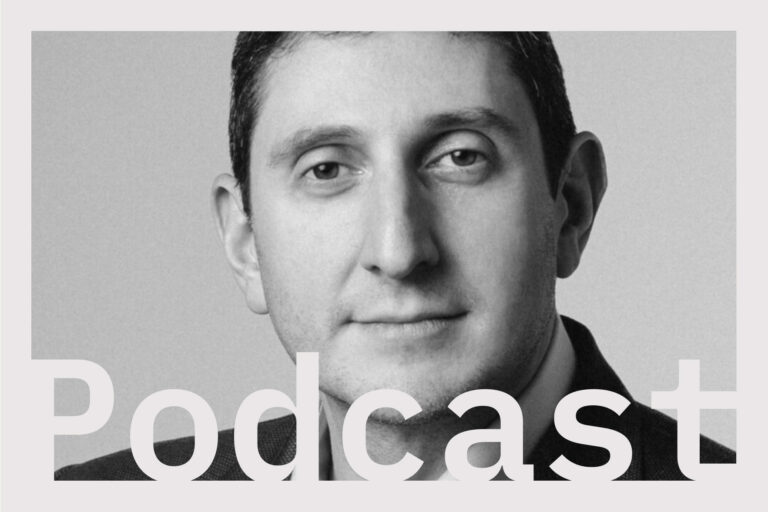
Although the chief data officer role is a relatively new addition to the C-suite, it has now been in place long enough in many enterprises to make some general observations about people who are successful in the role and those who struggle to have an impact.
Observations of CDOs and CDO-like roles in action across the public and private sector and in multiple industries have noticed the corresponding results in their organisations. These observations have identified four types that characterise the differences in how CDOs operate and the impact these differences have on effectiveness, so organisations can select the “right one” for them.
The Two Axes of CDO Characteristics
There are two major defining characteristics that differentiate CDOs, and these form the axes to identify the four types:
Innovative use of data
The first defining characteristic (on the X-axis of the matrix) is innovative use of data. It is no secret that there has been an explosion in the variety of data available to an enterprise from both internal and external sources. Web logs, sensor data (and various other “things”), social media, video, and audio, along with continuously growing traditional data, all provide opportunities for value but also bewilderment. It’s the CDO’s job to be aware of all these sources of data and to educate others in the organisation on the potential value. Moreover, if the CDO happens to be responsible for analytics (that is, the CDO is also playing the role of chief analytics officer) then he or she has the added responsibility of understanding and communicating the value of various analytics techniques. These techniques range from basic reporting to descriptive / predictive analytics, and advanced machine learning and visualisation.
However – and this is where the second axis becomes important – it is not the CDO’s job to decide the value of data and analytics for the organisation. That is the role of other executives (and their business liaison from IT) whom the CDO advises and supports as the business leaders propose value-producing initiatives and projects through the organisation’s standard vetting and funding processes.
Alignment to funded business initiatives
The second defining characteristic (on the Y-axis of the matrix) is alignment to funded business initiatives. This is by far the most important differentiator between successful and unsuccessful CDOs and, unfortunately, it’s also the most miscommunicated and misunderstood. A search for articles on advice for CDOs will suggest that the CDO establishes enterprise data resources along with associated data management capabilities, thus ensuring that the data is available, of good quality, and well protected. Within these same articles, the reader inevitably will discover something like “make sure your data initiatives add business value!” That is just not specific enough.
As CDO, if the focus is on the value of the CDO’s own initiatives, who is delivering the data for all those business initiatives sponsored by others? So, the characteristic along the Y-axis is not about aligning the CDO’s work to the enterprise’s mission, strategies, goals, principles, or even business value. The alignment supports those things, but in a very specific way – by supporting funded business initiatives that fulfill them. The degree to which a CDO can claim that his or her work is directly needed for the success of funded business initiatives – sponsored by other CxOs – is the degree to which that CDO will be successful. It is as simple as that.
The Four Types of CDO
The four types of CDOs are the Tail Chaser, the Resume Builder, the Collaborator and the Pioneer.
The Tail Chaser CDO
The good thing about the Tail Chaser CDO is that he or she is usually open to advice. Putting aside for the moment the tongue-in-cheek name of this type, there is nothing wrong with being a little confused about how to get started, or with making several attempts that just do not work out. There really are not many models to follow, and, advice can be deceptively close to what’s needed and still result in no progress or failure.
The Resume Builder CDO
The Resume Builder CDO is the most challenging of the bunch. This CDO is a master at creating the illusion of progress – with very little real progress – even if it’s not always conscious or intentional. The Resume Builder creates a lot of presentations about data, data governance, regulatory compliance, artificial intelligence, and produces charters, policies, roles, responsibilities, request processes, and so on – all very important, no doubt.
With the Resume Builder, all the most important business initiatives of the company must solve their own data needs and issues while the CDO tries to gain traction with “data initiatives,” whatever that means. Just as it starts to become clear that only negligible actual value is being produced, this CDO simply updates his or her resume with all the right buzzwords, claims success, and moves on.
The Collaborator CDO
Considering the average level of maturity in the CDO role today, the Collaborator CDO level is an understandable growth point. This CDO is solid and effective and should be respected. The top priority of this CDO is not to make a big, visible splash, but to support others – very directly. The Collaborator CDO identifies the funded initiatives of the company – without necessarily proposing any new ones or significantly transforming those that are already approved – and simply offers to enable them with the data they need to be successful. In doing this, the Collaborator CDO can easily see the commonalities in data needs across the company and therefore is able to deploy data rationally (integrated, limited duplication and overlap, etc).
This CDO does not deploy data as a “foundation” in the hope that the data will be used someday but deploys data just-in-time and just-enough to support the applications sponsored primarily by others. In addition, the Collaborator does not wait for others to request data. Instead, this CDO determines the data (and associated quality) needed based on the enterprise and departmental initiatives that are already on the books.
The Pioneer CDO
The Pioneer CDO is the most mature type and should be the ultimate goal for all CDOs. Most Collaborator CDOs will inevitably become Pioneer CDOs as they look for new ways to support their partners. Tail Chaser CDOs have a chance of getting to Pioneer level if they focus on moving to the right on the X-axis first. Resume Builder CDOs are unlikely ever to become Pioneer CDOs because they are doing too well at perception management and mobility to worry about it.
At the Pioneer level of maturity, the CDO is aware of the most advanced ways to use data while keeping in mind that basic capabilities are still crucial. The Pioneer CDO uses this knowledge to inspire other CxOs (and, again, their single corresponding IT liaisons) to propose or transform initiatives that provide value in their area of responsibility. The data and capabilities this CDO delivers are not implemented for their own sake, but instead to directly serve the most important needs of the enterprise – that is, the value associated with funded business initiatives sponsored by others.
As CDOs become a standard role in large enterprises, serious challenges in the role are beginning to surface.
Yet the role is vital, and with the rapid proliferation of data and the variety of methods to leverage that data for business value, the need for what the CDO can offer will only increase. Identifying the factors that make this role successful and applying them as early as possible will save CDOs, and the organisations they serve, a lot of time and frustration.
Kevin Lewis
Consulting Director for Teradata’s Strategy and Governance practice


